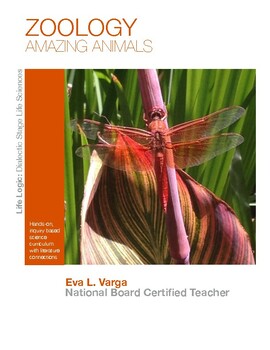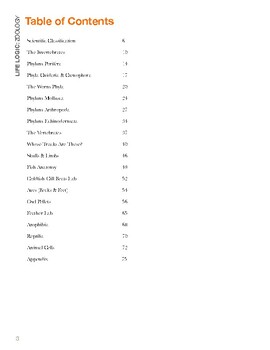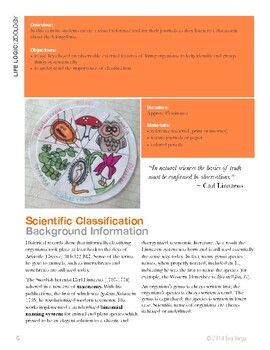Amazing Animals - Zoology Unit Study
Eva Varga
20 Followers
Grade Levels
5th - 8th
Subjects
Resource Type
Standards
NGSSMS-LS1-2
NGSSMS-LS2-2
NGSSMS-LS2-3
NGSSMS-LS1-3
NGSSMS-LS1-1
Formats Included
- PDF
Pages
90 pages
Eva Varga
20 Followers
Description
Amazing Animals is one of my favorite hands-on life science curriculum because it provides ample opportunity for kids to explore animal science in-depth. This 10-week unit is full of inquiry-based activities and lesson plans fully outlined for you. Background knowledge, notebooking pages, and suggestions for extension activities are included. 90 page eBook (PDF)
Total Pages
90 pages
Answer Key
N/A
Teaching Duration
3 months
Report this resource to TPT
Reported resources will be reviewed by our team. Report this resource to let us know if this resource violates TPT’s content guidelines.
Standards
to see state-specific standards (only available in the US).
NGSSMS-LS1-2
Develop and use a model to describe the function of a cell as a whole and ways the parts of cells contribute to the function. Emphasis is on the cell functioning as a whole system and the primary role of identified parts of the cell, specifically the nucleus, chloroplasts, mitochondria, cell membrane, and cell wall. Assessment of organelle structure/function relationships is limited to the cell wall and cell membrane. Assessment of the function of the other organelles is limited to their relationship to the whole cell. Assessment does not include the biochemical function of cells or cell parts.
NGSSMS-LS2-2
Construct an explanation that predicts patterns of interactions among organisms across multiple ecosystems. Emphasis is on predicting consistent patterns of interactions in different ecosystems in terms of the relationships among and between organisms and abiotic components of ecosystems. Examples of types of interactions could include competitive, predatory, and mutually beneficial.
NGSSMS-LS2-3
Develop a model to describe the cycling of matter and flow of energy among living and nonliving parts of an ecosystem. Emphasis is on describing the conservation of matter and flow of energy into and out of various ecosystems, and on defining the boundaries of the system. Assessment does not include the use of chemical reactions to describe the processes.
NGSSMS-LS1-3
Use argument supported by evidence for how the body is a system of interacting subsystems composed of groups of cells. Emphasis is on the conceptual understanding that cells form tissues and tissues form organs specialized for particular body functions. Examples could include the interaction of subsystems within a system and the normal functioning of those systems. Assessment does not include the mechanism of one body system independent of others. Assessment is limited to the circulatory, excretory, digestive, respiratory, muscular, and nervous systems.
NGSSMS-LS1-1
Conduct an investigation to provide evidence that living things are made of cells; either one cell or many different numbers and types of cells. Emphasis is on developing evidence that living things are made of cells, distinguishing between living and non-living cells, and understanding that living things may be made of one cell or many and varied cells.





